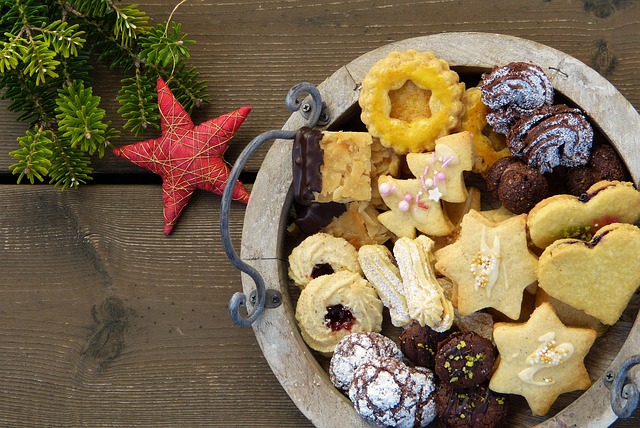The Sweet World of Confectionery: A Delectable Journey
Confectionery, the art of creating sweet treats, has been captivating taste buds and bringing joy to people for centuries. From delicate pastries to rich chocolates, the world of confectionery encompasses a wide array of sugary delights that tantalize our senses and satisfy our cravings. This article delves into the fascinating realm of confectionery, exploring its history, techniques, and the various types of sweet creations that have become beloved staples in cuisines around the globe.

The Industrial Revolution marked a significant turning point in confectionery production, introducing mechanized processes that allowed for mass production of sweets. This period saw the rise of iconic confectionery brands and the popularization of treats like chocolate bars and packaged candies. Today, confectionery continues to evolve, with artisanal makers pushing the boundaries of flavor combinations and presentation, while large-scale manufacturers innovate to meet changing consumer preferences.
What are the main types of confectionery products?
Confectionery products can be broadly categorized into several main types, each with its own unique characteristics and production methods:
-
Chocolates: From single-origin bars to filled truffles, chocolates come in countless varieties and are often considered the pinnacle of confectionery.
-
Sugar confectionery: This category includes hard candies, gummies, lollipops, and other treats primarily made from sugar or sugar substitutes.
-
Pastries and baked goods: Cakes, cookies, pies, and other baked sweets fall under this category, often combining flour, sugar, and fats to create indulgent desserts.
-
Ice cream and frozen desserts: While not always considered traditional confectionery, these frozen treats are an essential part of the sweet food landscape.
-
Nuts and dried fruits: Often used as ingredients in other confections, nuts and dried fruits can also be candied or coated to create standalone treats.
How does the baking process contribute to confectionery?
Baking plays a crucial role in many aspects of confectionery, particularly in the creation of pastries, cakes, and other desserts. The baking process involves the application of heat to a mixture of ingredients, typically including flour, sugar, fats, and leavening agents. This heat triggers chemical reactions that transform the raw ingredients into the finished product, creating texture, flavor, and structure.
In confectionery, baking is used to create a wide range of products, from delicate puff pastry to dense, fudgy brownies. The temperature and duration of baking can significantly impact the final result, with precise control often necessary to achieve the desired texture and flavor profile. Additionally, baking techniques like caramelization and the Maillard reaction contribute to the complex flavors and appealing colors found in many baked confections.
What role does food science play in modern confectionery?
Food science has become an integral part of modern confectionery, influencing everything from ingredient selection to production methods. Scientists and food technologists work to understand the chemical and physical properties of ingredients, allowing for the development of new textures, flavors, and shelf-stable products.
Some key areas where food science impacts confectionery include:
-
Ingredient functionality: Understanding how different ingredients interact allows confectioners to create products with specific textures and mouthfeels.
-
Flavor development: Food scientists study the compounds responsible for various flavors, enabling the creation of natural and artificial flavorings.
-
Preservation techniques: Extending the shelf life of confectionery products while maintaining quality is a major focus of food science research.
-
Nutritional enhancement: As consumer demand for healthier options grows, food scientists work on developing reduced-sugar or fortified confectionery products.
-
Texture modification: Techniques like tempering chocolate or controlling crystal formation in sugar syrups are rooted in food science principles.
How has the dessert industry embraced confectionery techniques?
The dessert industry has long been intertwined with confectionery, with many desserts incorporating confectionery techniques and ingredients. In recent years, there has been a trend towards more elaborate and visually striking desserts that showcase advanced confectionery skills.
Pastry chefs and dessert creators often use confectionery techniques to add complexity and interest to their creations. For example:
-
Chocolate work: Intricate chocolate decorations, tempered shells, and molded shapes are frequently used to elevate plated desserts.
-
Sugar work: Spun sugar, isomalt sculptures, and pulled sugar decorations add dramatic visual elements to desserts.
-
Candy making: Techniques from hard candy production are used to create garnishes and textural elements in desserts.
-
Flavor pairing: The sophisticated flavor combinations often found in fine chocolates are now applied to a wide range of desserts.
-
Textures: Confectionery techniques for creating different textures, such as pralines or nougat, are incorporated into modern dessert compositions.
The integration of confectionery techniques into the broader dessert industry has led to a blurring of lines between traditional confectionery and other sweet culinary arts, resulting in increasingly innovative and exciting dessert offerings.
Confectionery remains a vibrant and evolving field, blending traditional techniques with modern science and culinary innovation. From the simple pleasure of a well-crafted chocolate to the awe-inspiring creations of pastry chefs, the world of confectionery continues to delight and inspire, offering a sweet escape for food lovers around the world.




